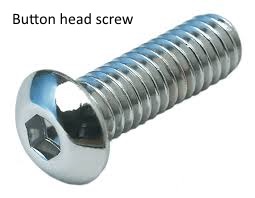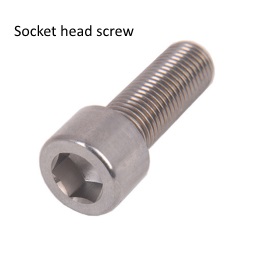Button-head screw installation
by Had Robinson
Use 30-40% or less torque on these screws according to the standard table for installing steel screws into aluminum. Use BLUE threadlock. These screws are not designed to hold pieces together where the effects of great force may exist, such as in a cylinder head, exhaust port, or engine case halves.
button-head screws, set screws, and studs cannot be torqued like ordinary screws. These screws have a small contact area where the tool is applied compared to other
kinds of head types (e.g. hex, socket, cap, Torx, etc.) Torque on these screws must be reduced. If this is not done, either the screw, the piece being fastened, or the tool will be damaged.
If this is not done, either the screw, the piece being fastened, or the tool will be damaged.
Button heads are light duty screws used in places where the exposed heads come in contact with other materials which could be damaged by other higher profile fasteners. Materials that are
used in harnesses could be damaged by a hex or socket head screw. Parts of the body that
come in contact with a button-head screw will also have less chance of bruising or injury.
be damaged by a hex or socket head screw. Parts of the body that
come in contact with a button-head screw will also have less chance of bruising or injury.
The downside of the button-head is that it can loosen because it cannot be torqued down tightly. Therefore, the appropriate threadlock should be used on these types of fasteners unless they are used with threaded inserts. Then it is advisable to use lock washers and no threadlock. Inserts (which are usually in plastic of some kind) easily turn if the screw has threadlock and a pilot attempts to remove the button-head. The result is that it is difficult or impossible to remove the screw.
On the other hand, a socket head cap screw can be torqued down much tighter because of the greater amount of contact area of the screw with the tool that turns it. Socket heads are used, for example, to attach the propeller to the hub where the fastened parts cannot be allowed to move but very little.
button-head screws are easy to damage so be careful.
![]()




